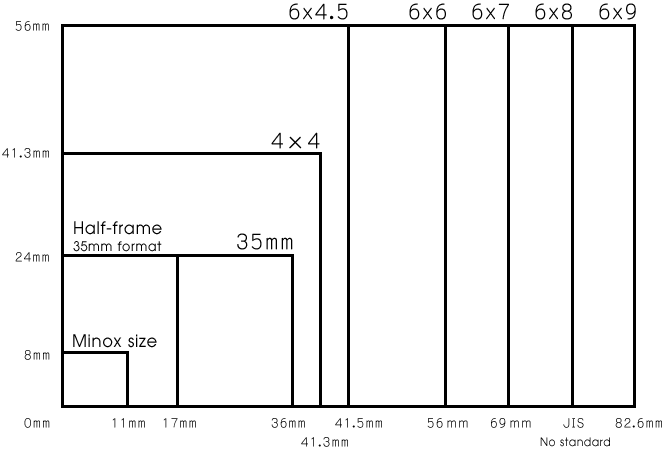The table of focal length in each format
| 35mm format | 6x4.5cm format | 6x6cm format | 6x7cm format | 4x5" format | 8x10" format |
| 16mm | 25mm | 30mm | 32mm | - | - |
| 20mm | 32mm | 36mm | 41mm | - | - |
| 24mm | 38mm | 43mm | 49mm | 84mm | - |
| 28mm | 45mm | 51mm | 57mm | 98mm | 202mm |
| 35mm | 56mm | 64mm | 71mm | 123mm | 252mm |
| 50mm | 80mm | 91mm | 102mm | 176mm | 360mm |
| 85mm | 136mm | 155mm | 174mm | 300mm | 613mm |
| 105mm | 169mm | 192mm | 215mm | 371mm | 757mm |
| 135mm | 217mm | 246mm | 277mm | 477mm | - |
| 180mm | 289mm | 329mm | 369mm | 636mm | - |
| 200mm | 321mm | 365mm | 410mm | 706mm | - |
| 300mm | 482mm | 548mm | - | - | - |
| 400mm | 643mm | - | - | - | - |
| 500mm | - | - | - | - | - |
| 600mm | - | - | - | - | - |
Note |
|
Picture format
The picture format is the area exposed through the lens when a picture is taken. |

|
View angle The view angle shows the angle lined from principal ray of the lens to both ends of diagonal of the picture. Generally, there are two principal rays, one at front and the other at back. In this case, it means the one at back, the second principal ray. This is also the basis of the focal length (focal length is the length from the second principal ray to the film surface.), and so the view angle depends on the picture format and focal length. |